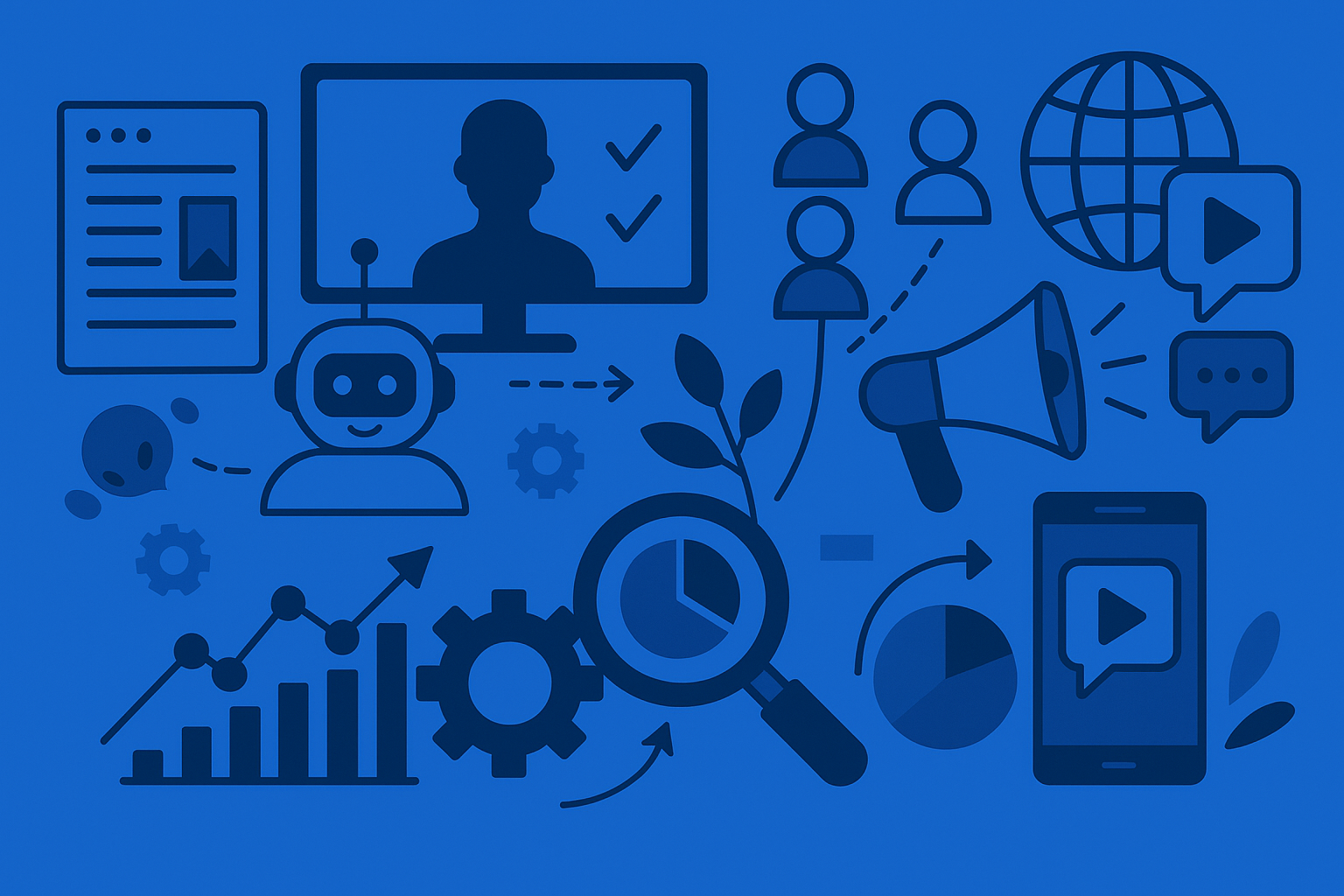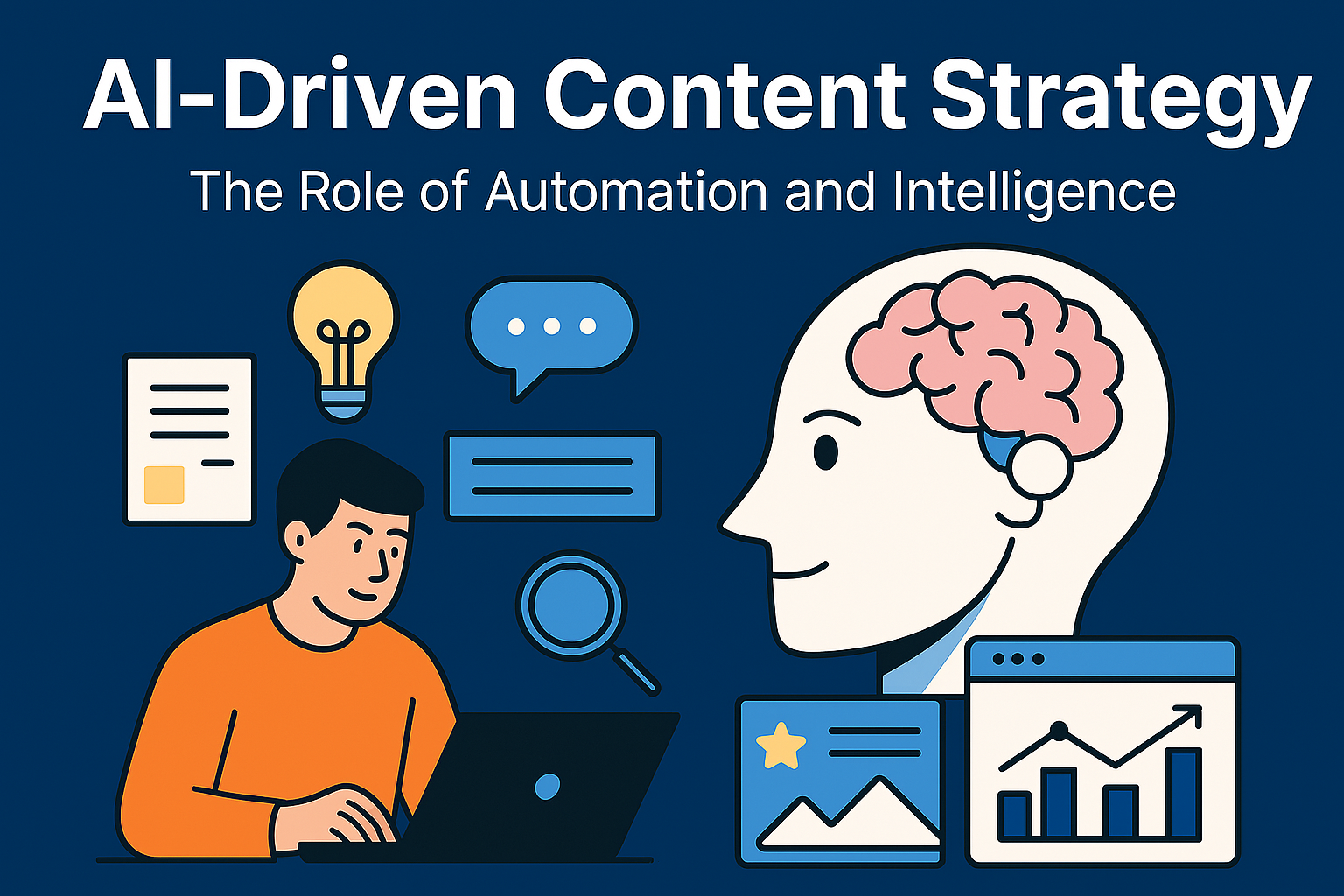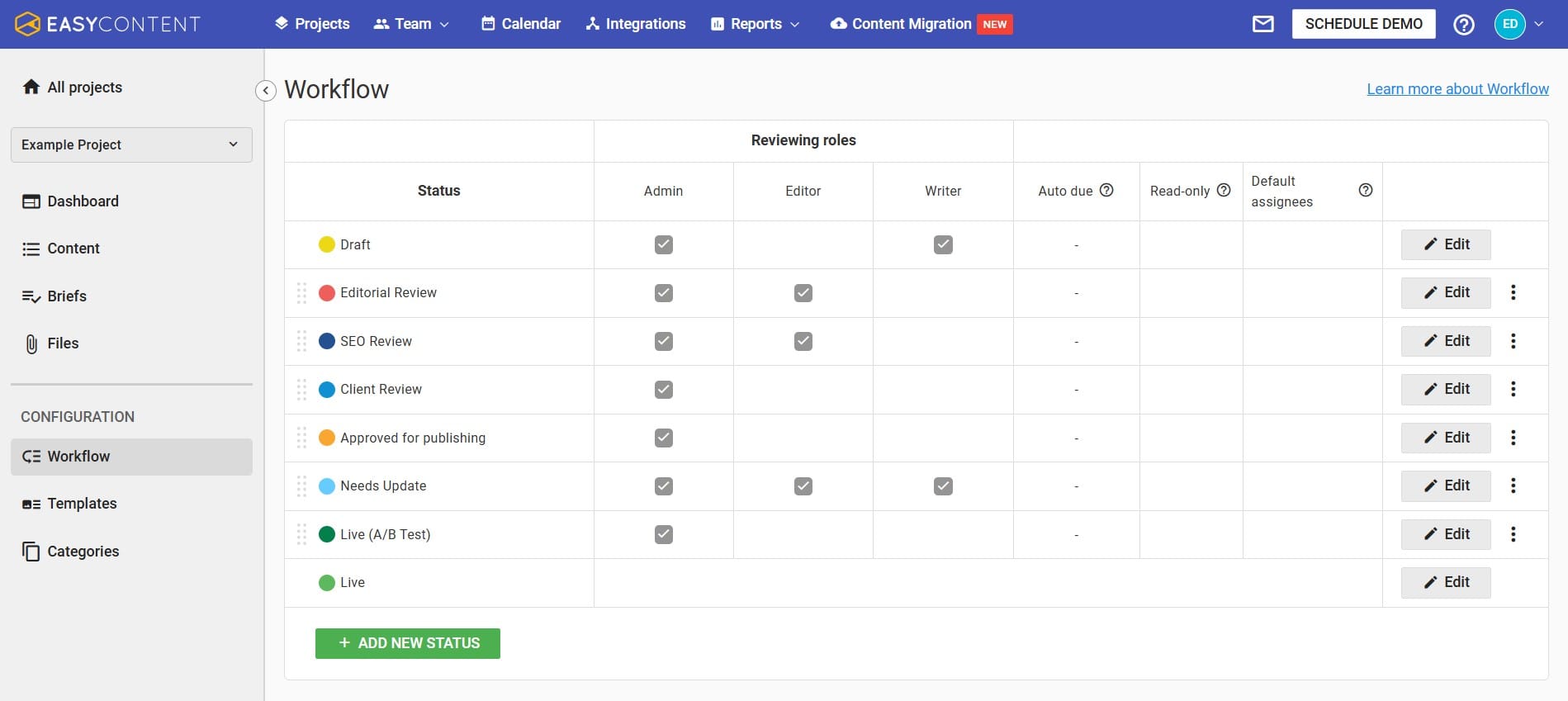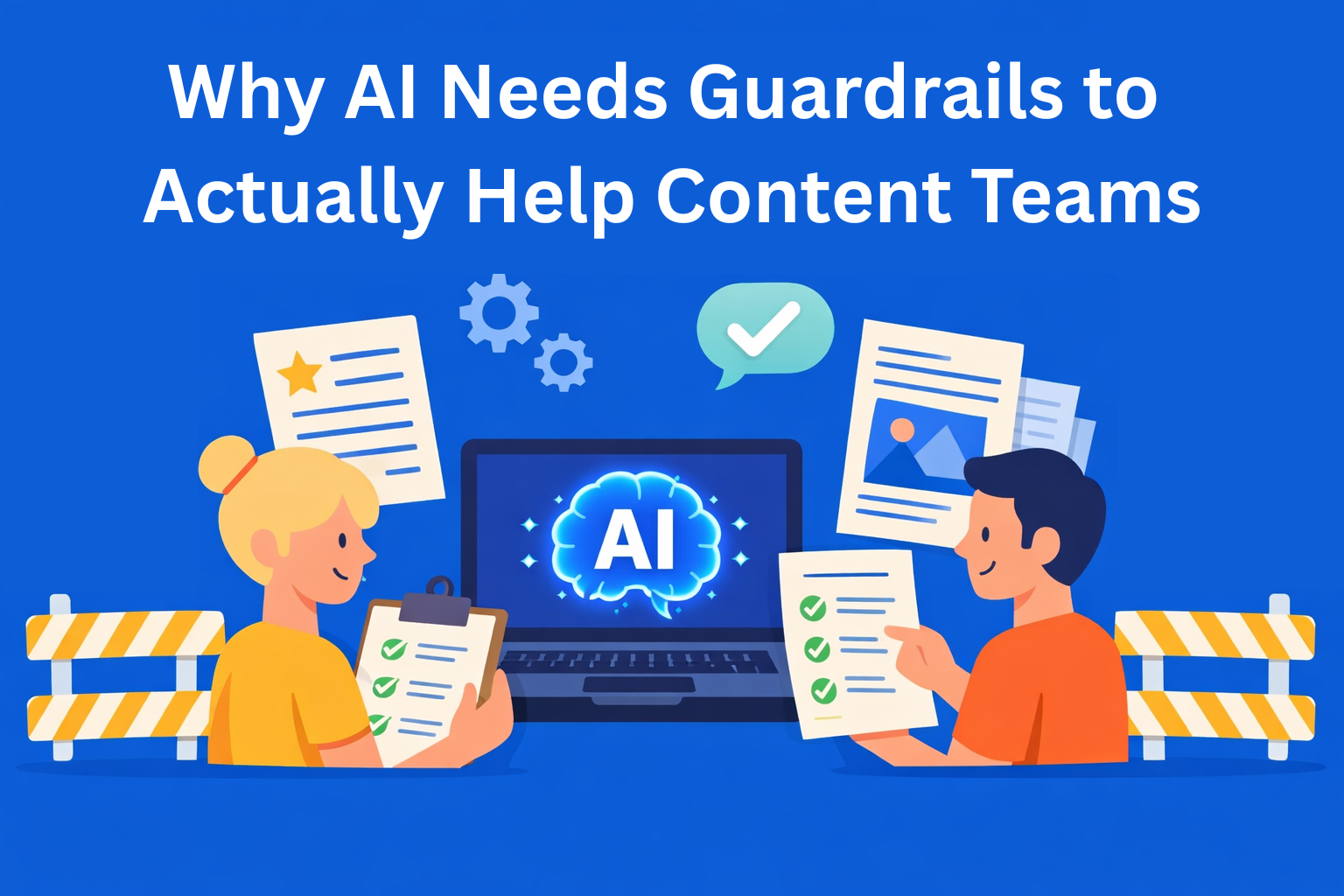Beyond the CMS: Why Content Teams Must Evolve to Stay Ahead by 2025
Content teams must move beyond outdated CMS platforms and adopt flexible tools that integrate AI, automation, and real-time collaboration. With EasyContent, they can work faster, stay organized, and scale, keeping up with trends and creating high-quality content without the chaos.

The way we manage content is changing faster than we can keep up, and teams that don’t stay on top of things risk being left in the dust. A few years ago, a decent CMS (content management system) would have been sufficient to maintain seamless operation. But by 2025 the game will have evolved. Depending only on a conventional CMS to arrange and publish content is no longer enough. To remain in the game, companies must change, simplify, and rethink their approaches. Automate too.
Today, audiences expect content that’s personalized, engaging, and instantly accessible—whether it’s on a website, app, social media, or even voice search. Content needs to be flexible and optimized for different formats. This shift demands a smarter, more dynamic approach—one that combines AI, automation, collaboration tools, and omnichannel publishing into one seamless ecosystem.
One of the biggest challenges for teams is balancing efficiency and quality. People get stuck in endless emails, feedback loops, and late decisions when there isn't a clear process in place. That’s when something like EasyContent comes in handy. Traditional CMS platforms only store material. EasyContent streamlines the process by putting everything in one place—from assigning tasks to tracking progress to managing approvals. Teams can work together faster and smarter, without wasting time on messy workflows.
Here’s a short story: I worked with a group that had to wait three days for a blog post to be approved. Three days! It turned out no one checked the spam folder where the draft was sent. After that, we all agreed we needed a better system. And that’s where EasyContent steps in—to save the day and reduce headaches.
In this blog, we’ll break down the key areas where content teams need to evolve by 2025 to stay competitive:
- Moving from a traditional CMS to a dynamic content ecosystem
- Using AI strategies to optimize processes
- Better collaboration in remote and hybrid teams
- Adapting content for omnichannel publishing
- Leveraging data and analytics to improve performance
By adopting new technologies and refining workflows, teams can stay ahead of trends and deliver content faster, smarter, and more efficiently. Ready to future-proof your strategy? Let’s dive in!
📌 Key Takeaways
- Traditional CMS tools are no longer enough to support modern, scalable content operations.
- AI and automation are essential for smarter planning, personalization, and performance tracking.
- Remote-ready collaboration tools are replacing outdated, isolated workflows.
- Omnichannel publishing ensures content reaches users on every relevant platform without duplication of effort.
- Content optimization must be continuous and data-driven—not just published and forgotten.
- Future-ready content teams rely on tools like EasyContent to manage complex workflows in one place.
The Shift from Traditional CMS to Dynamic Content Ecosystems
Taking care of cotent has come a long way. It wasn’t long ago when businesses used static, old-fashioned CMS systems that only stored blogs and web pages. But the digital world of today needs a lot more. Content on websites, social media, emails, applications, and even voice assistants must be instantly available. Static CMS systems simply can’t keep up.
Businesses now seek flexible environments that offer automation, independence, and seamless engagement across all channels.
Why Traditional CMS Platforms Are Becoming Obsolete
The old-school CMS was built for a time when content was simple. You’d write a blog post, hit "publish", and be done. But today, content is personalized, interactive, and omnichannel. Audiences expect consistent, engaging experiences whether they’re on a website, Instagram, or reading an email.
A static CMS slows down teams because it requires manual work for each platform—copying, pasting, editing—creating inconsistencies and wasting time.
The Rise of Headless and Composable CMS Solutions
To solve this, many companies are switching to headless and composable CMS platforms. Unlike traditional systems, a headless CMS separates content from its presentation, allowing teams to publish across multiple platforms from a single source.
A composable CMS goes even further—letting teams integrate only the tools they need and build a system tailored to their exact workflow. It’s flexibility without compromise.
Flexibility Over Reliance on a Single System
In today’s fast-paced content environment, teams can’t afford rigid systems. Relying on one CMS to do everything is no longer realistic. Instead, companies need content ecosystems—integrated tools that streamline planning, creation, and publishing.
EasyContent helps bridge this gap by offering a centralized workspace for all tasks. Teams can manage everything—from task assignment to real-time collaboration—in one place. With automation, role-based access, and built-in communication, teams can stay agile and scalable.
The Bottom Line
Static CMS platforms are becoming outdated. To stay competitive in 2025 and beyond, businesses must shift to dynamic, flexible ecosystems that allow for automation, integration, and collaboration.
Headless, composable, and ecosystem-based systems are not trends—they are the new standard. With tools like EasyContent, content teams can scale strategies, reduce friction, and focus on what really matters—creating great content.
So if you're serious about the future, ditch the old ways and embrace a modern content management system that actually keeps up.

AI-Driven Content Strategy: The Role of Automation and Intelligence
Content marketing has always been about knowing your audience, providing value, and staying ahead of trends. But in today’s fast-paced digital world, keeping up with content demands is nearly impossible without help. That’s where AI-powered solutions are changing the game—helping teams generate ideas, personalize content, and analyze performance faster and more precisely.
How AI is Transforming Content Ideation and Creation
Consistently coming up with fresh, engaging ideas is one of the toughest challenges for content teams. AI-driven tools now analyze audience behavior, trending topics, and search data to suggest content that’s likely to perform well.
With AI-powered insights, marketers can build data-backed strategies that truly resonate—without wasting hours brainstorming.
AI also helps with writing and editing, by improving headlines, suggesting SEO-friendly terms, and saving time on repetitive tasks. While AI can’t replace human creativity, it frees writers to focus on quality and storytelling.
The Rise of Predictive Content Recommendations
AI doesn’t just help create content—it also makes it smarter. Predictive analytics helps platforms understand what type of content users are likely to engage with next. Just like Netflix recommends shows, content tools can suggest personalized blog posts, emails, or product pages.
This allows teams to target more accurately, ensuring the right content reaches the right people at the right time.
The Balance Between AI and Human Creativity
Even though AI speeds up content creation, it can't replicate human tone, emotion, and authenticity. Overusing AI can lead to content that feels generic and detached.
The ideal approach? A hybrid model—let AI handle the repetitive work, while humans shape the story and emotional depth.
Tools like EasyContent support this balance by automating processes (like content planning or approvals) while still supporting collaborative, human-led creation. The result: fast, high-quality content that still feels genuine.
AI’s Future in Content Strategy
As AI evolves, it will offer even smarter tools that enhance planning, content speed, and user experience—without sacrificing brand voice.
But remember: AI is a tool, not a replacement for creativity. Used wisely, it helps teams work smarter, not harder, and focus on what really matters—creating meaningful content.
In today’s crowded digital space, AI can help cut through the noise, deliver insightful data, and keep teams ahead of the curve. With platforms like EasyContent, teams can combine automation and creativity, scale their efforts, and produce more with less stress.
Collaboration Beyond the CMS: Building Agile and Remote-Ready Teams
Content teams now operate very differently than they did just a few years ago. With more companies embracing remote and hybrid work, traditional communication tools are no longer enough. Emails get lost, feedback is scattered, and tracking progress becomes a headache. That’s why content teams need more than just a CMS—they need a centralized, agile system that keeps everyone aligned, no matter where they work.
Why Remote Teams Need Better Collaboration Tools
The days of everyone working under one roof are gone. Today’s teams are spread across time zones, juggling multiple projects. Without proper tools, things can spiral: missed deadlines, duplicated work, and no visibility on who’s doing what.
A typical CMS might store content, but it doesn’t help with communication, approvals, or workflow management—which are all essential for remote teams. That’s why companies need a dedicated collaboration platform that combines project tracking, team messaging, and approval flows in one place.
Value of a Centralized Content Hub
Content teams need everything in one place, not spread across email threads, chat apps, and docs. A central hub like EasyContent brings together tasks, feedback, and approvals, streamlining the entire process.
With EasyContent, teams can:
- Assign clear roles and responsibilities to writers, editors, and reviewers
- Track content progress from idea to publication
- Automate review workflows to save time
- Collaborate in real time, no unnecessary emails
- Prevent delays and missed deadlines—even when remote
Strategies for Keeping Distributed Teams Efficient
Remote work doesn’t have to mean disorganized. These best practices help:
- Clearly define roles so everyone knows who owns what
- Automate repetitive tasks like reminders and assignments
- Use a single communication tool to avoid message scattering
- Keep deadlines and project statuses visible to all
- Continuously optimize workflows—what worked last year might not work now
Cooperation in Content: Future Directions
Remote work is here to stay. Teams that embrace agile, tech-powered collaboration will outperform those stuck in outdated systems. Platforms like EasyContent help remote teams stay aligned, work efficiently, and create high-impact content—without the usual chaos.
At the end of the day, collaboration isn’t just about having a CMS. It’s about using the right tools, having the right structure, and building a team culture that supports creative, connected, and scalable content production.
Omnichannel Publishing and Adaptive Content Experiences
Content goes beyond blogs and webpages now. Audiences today absorb information from smart devices, voice assistants, mobile apps, and social media. Manually adapting content for each platform is time-consuming and inefficient. That’s why companies are moving to omnichannel publishing, where content flows across platforms without extra effort.
The Growing Demand for Adaptive Content
Imagine spending weeks on a blog post, only to manually adjust it for LinkedIn, turn it into a Twitter thread, and rewrite it for email. This is not scalable, especially with daily content needs.
Consumers now expect a consistent experience everywhere—whether on a website, social feed, or through voice search. That’s why adaptive content is becoming the future of content marketing.
How Structured Content Models Future-Proof Strategy
Instead of reinventing content for each platform, brands need a structured content model—a system that makes content modular, reusable, and easily updatable.
Structured content helps teams:
- Reuse content across platforms
- Update without reformatting everything
- Keep messaging consistent across channels
Write once, publish everywhere—that’s the power of a structured model.
How Teams Can Create Once and Publish Everywhere
To make omnichannel work, teams need tools that support automation, workflow structure, and seamless publishing.
That’s where EasyContent stands out. It helps teams:
- Centralize and manage everything in one place
- Automate workflows and approvals
- Maintain consistency across all formats
This gives teams more time to focus on strategy and creativity, not formatting.
What’s Next for Omnichannel Publishing
The need for multi-platform-ready content is only growing. Teams that embrace centralized tools, automation, and organized content will stay ahead.
If you're still manually tweaking content for every channel, it’s time to upgrade your workflow. Omnichannel publishing isn’t a trend—it’s the new standard. And platforms like EasyContent make it finally doable without the chaos.
Measuring Performance with Data-Driven Content Optimization
Content teams used to rely on gut feelings to figure out what works. A catchy title? A trending topic? A well-written blog? While creativity still matters, it's data that now truly drives content success. In 2025 and beyond, teams that track, analyze, and optimize content in real time will gain a competitive edge.
The Move From Gut Feelings to Data-Driven Decisions
In the past, content planning was based on intuition and what worked before. But digital marketing has evolved—what works today might flop tomorrow.
Audiences shift, algorithms change, and user expectations grow. That’s why top-performing teams now use data to guide strategy—tracking which topics perform, how formats impact conversion, and adjusting accordingly.
No more guessing—insights now shape success.
Key Metrics That Define Success in 2025
Success is no longer just about clicks or views. The metrics that really matter include:
- Engagement Rate – Are users interacting (time on page, shares, comments)?
- Reader Retention – Do people come back and stay longer?
- Conversion Triggers – Does your content drive actions like purchases, downloads, or signups?
These metrics help teams refine existing content instead of constantly creating new material from scratch.
Why Real-Time Analytics & A/B Testing Matter
Real-time analytics allow teams to see what’s working immediately, not weeks later. This means faster decisions, smarter adjustments, and better outcomes.
And with A/B testing, small tweaks—like a different CTA or headline layout—can make a big difference in clicks or engagement. Testing removes the guesswork and shows which version actually performs better.

How EasyContent Helps Optimize Performance
Tracking and managing content performance can get overwhelming—unless you have the right system.
EasyContent simplifies the process with:
- A structured workflow that tracks content from ideation to publication
- Collaborative tools to ensure every piece is thoroughly reviewed
- Version control and feedback loops to continually improve quality
With everything centralized, EasyContent helps teams quickly analyze performance, identify top-performing content, and refine their strategy with confidence.
Future-Proofing Content Workflows with Scalable Solutions
Creating content today isn’t what it used to be. What once worked for small teams with limited output no longer fits the demands of a fast-paced, content-heavy world. To stay competitive, businesses need scalable solutions that can handle growing demands, new platforms, and shifting audience expectations.
If a team’s workflow lacks flexibility, it quickly becomes overwhelmed—missing deadlines, losing quality, and falling behind.
Teams must build systems that grow with them, allowing for more content without compromising speed or quality.
The Demand for Scalable Production and Flexible Workflows
Many teams still operate with outdated systems:
- Manual approvals
- Scattered feedback
- Unclear responsibilities
This creates delays, confusion, and unnecessary back-and-forth. And as content needs grow, so do these issues.
A future-proof workflow doesn’t just keep pace—it helps you stay ahead by:
- Adapting to new channels and formats without complication
- Making collaboration and approval easier and faster
- Scaling production without overloading the team or sacrificing quality
Without this foundation, teams face rework, missed opportunities, and burnout.
How EasyContent Helps Teams Stay Organized and Efficient
The right framework can make all the difference. EasyContent brings everything together—no more juggling tools, endless emails, or chaotic approval chains.
Here’s how EasyContent supports scalable content management:
- Centralized Workspace – Keep drafts, assignments, approvals, and feedback in one platform to eliminate scattered files and lost updates
- Automated Workflows – Structure your pipeline so content moves seamlessly from idea to publication, without manual follow-ups
When everyone has clarity on roles, and workflows are both organized and flexible, teams get more done—without bottlenecks or version confusion.
Why Integration Matters: SEO, Marketing & Distribution
A scalable content workflow doesn’t operate in isolation—it must connect with your entire marketing ecosystem.
To get the most out of content efforts, teams should integrate:
- SEO tools to optimize visibility and reach the right audience
- Marketing automation for smooth, multi-channel distribution
- Analytics platforms to track results and improve future planning
Instead of treating content as a standalone task, companies should weave it into their broader digital strategy. This ensures faster execution, smarter optimization, and better results.
The Future of Content Management: Adapt or Fall Behind
Teams' ways of creating, managing, and sharing content are changing rapidly. Traditional content management systems (CMS) no longer meet the growing need for real-time, cross-platform, AI-powered content experiences. The shift isn’t just about new tech—it’s about embracing a whole new mindset around content management.
The Major Shifts Defining the Future
Modern content teams are leaving behind static, linear workflows and moving toward dynamic, interconnected ecosystems, where:
- Automation and AI handle repetitive tasks, boost speed, and improve content performance
- Content is created once and optimized for web, mobile, social media, and voice search
- Collaboration tools like EasyContent enable real-time teamwork with structured, delay-free processes
Ignoring this evolution means falling behind. Embracing it helps teams produce faster and deliver richer, more relevant experiences to their audience.
Why Teams Must Change to Stay Ahead
Let’s face it—how people consume content has changed. Audiences expect personalized, seamless experiences across multiple platforms. Relying on outdated CMS tools puts your business at a disadvantage.
To stay competitive, teams need to:
- Use AI to automate tasks that slow them down
- Ensure scalable infrastructure that can handle increasing data and demand
- Integrate CMS tools with SEO, marketing automation, and analytics platforms for a more holistic strategy
Tools like EasyContent are built for this. With centralized workflows, automated approvals, and real-time team tracking, it helps teams work smarter—not harder.
Looking Ahead: The Next Steps in Collaboration
The teams that adapt quickly will lead. AI-powered tools, automation, and omnichannel readiness are no longer optional—they're the new standard.
Those who evolve will scale content faster, reduce friction, and stay competitive. Those who don’t? They’ll get stuck in manual processes, missed deadlines, and content chaos.
If that sounds familiar, it’s time for an upgrade. Platforms like EasyContent give you the structure and freedom to collaborate, grow, and thrive.






